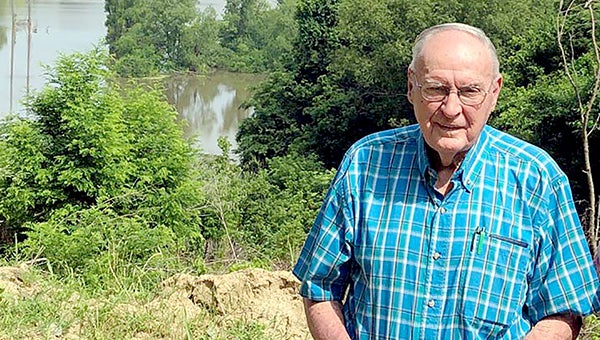Dr. Raymond Baker donates 10.6 acres at Fort St. Pierre site
Published 7:10 pm Monday, June 10, 2019

- Dr. Raymond Baker, a retired veterinarian from Natchez, donated more than 10 acres of land at the site of Fort St. Pierre, near the Redwood community, to the Archaeological Conservancy. (Submitted photo)
The recent donation of more than 10 acres of land at the Fort St. Pierre site off Mississippi 3 will preserve the site for future research and study, the chairman of the Fort St. Pierre Tercentenary Planning Commission said.
Dr. Raymond Baker, a retired veterinarian from Natchez, on June 4 donated 10.6 acres of land at the site of the French fort built in the 1700s to the Archaeological Conservancy, a nonprofit organization that identifies, acquires, and preserves the most significant archaeological sites in the United States.
The transfer was accepted by Jessica Crawford, director of the Conservatory’s Southeastern Division.
The Fort St. Pierre site is a National Historic Landmark and one of only two sites from the French and Indian period to be designated National Historic Landmarks in Mississippi.
The Tercentenary Planning Commission has a grant to install three onsite interpretive exhibits, to help visitors to the site learn about the site’s importance.
“The most important thing is that with ownership transferred from the Baker family to the Archaeological Conservancy that assures that the national historic landmark will be protected,” said Dr. Fred Brieur, retired research archeologist with the U.S. Army Corps of Engineers Engineer Research and Development Center and chairman of the Fort St. Pierre Tercentenary Planning Commission.
Fort St. Pierre, Brieur said, is the only French Fort remaining in Mississippi.
“All the others have been destroyed by development or other destructive processes,” he said. “Fort Rosalie in Natchez eroded away during the Civil War and the only thing left of that fort is the eastern earthen rampart. The rest is gone.”
Brieur said the property donated by Baker includes the Fort St. Pierre site — including all four of the fort’s walls. He said about 50 percent of the fort site has been excavated.
“That’s only within the fort,” he said. “That doesn’t include other structures and other features outside the fort; maybe burials, who knows? It has huge archaeological research potential. And that’s the most significant thing; that it is assured protection to achieve those potential values.”
He said Mississippi Department of Transportation property sits just outside the fort’s south wall, “And there are likely to be features and artifacts on that MDOT property as well.”
Brieur said immediate plans for the site include an erosion evaluation by a professional geologist, and non-invasive geophysical surveys by geophysicists and archeologists to determine what is under the site’s surface and determine where to excavate.
“There are several geophysicists and archaeologists who are interested in continuing their research for several years to come. The Baker donation really opened the door for a number of really interesting research and public appreciation values.”
The erosion evaluation, he said, “Is really important, because we think there is an erosion threat and we need to quantify that.”
Built on a site near Mississippi 3 north of the Redwood community, Fort St. Pierre and Fort Rosalie in Natchez were built to deter English traders from moving in the Lower Mississippi Valley and challenging the French sphere of influence.
St. Pierre was occupied for 11 years before an uprising among members of the Natchez tribe in 1729 attacked both St. Pierre and Rosalie, massacring the inhabitants of both forts and burning them to the ground.
The fort’s location was discovered by Dr. Ian Brown, a professor of anthropology at the University of Alabama.






